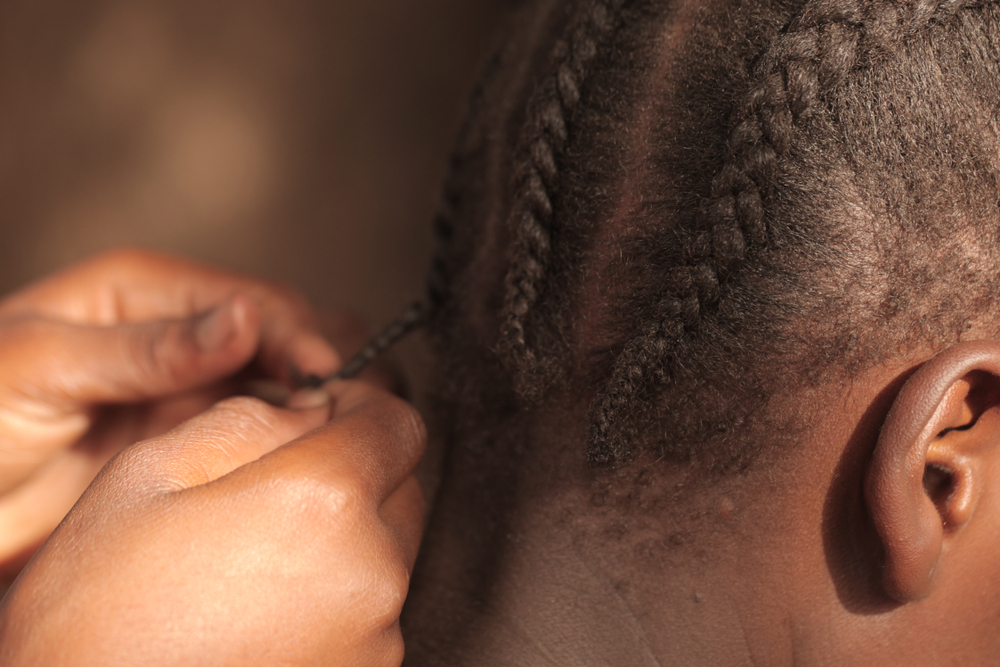A major part of childhood is having someone else make the majority of your decisions for you.
It’s often a difficult prospect, even frustrating at times, because kids have opinions on just about everything. And just like us, they aren’t wrong for wanting validation for their thoughts and feelings.
At the same time, they look to us to learn how to feel empowered about their capabilities, self-determination and worth. So, allowing them to have some say over their appearance, their hair, specifically, is a powerful place to start.
In our community, hair is a deeply personal part of our sense of self and it’s no different for our children. In fact, research shows that by the age of 6, Black girls can recognize the paradigm that ranks European hair textures above theirs; and they feel the damaging social pressures to conform and not feel accepted as themselves.
One of the main goals as parents and caregivers is to raise our kids in safe environments of acceptance, love and security, so they may grow into self-assured, authentic individuals who value themselves. And something as simple as letting them assist in twirling their own curls or choosing how many hair bows are needed for the “look of the day” are quite effective in setting the foundation they need for holding themselves in high esteem.
I have to admit, allowing extra time for a child to make their own decisions about their hair might be easier said than done, especially when dealing with a tight schedule. But, carving out a little space for their input (if for only a couple of minutes at a time) is a critical part of shaping their budding identities.
Ahead are reasons why the experts say giving our children autonomy over their natural hair is one of the greatest gifts we can offer.
It helps them build an identity.
Many of us use our hairstyles to show the world who we are. As children figure out an identity for themselves, surrounding them with imagery and role models that celebrate the beauty of their natural hair are great first steps in encouraging them to form positive thoughts and attitudes about it.
If Black children are only exposed to Eurocentric portrayals of hair, it creates discord for them about who they are. And in many cases, centuries-old European beauty norms are so deeply ingrained in us adults we may not always realize we’re passing them on to our kids.
If we consistently display constructive images of natural hair and maintain a healthy decolonization of our own deep-rooted biases, we remain positive role models, upholding our children’s discovery of who they are.

It builds independence and confidence in their own skin.
Therapists say when you allow a toddler to take part in hair choices, you are sending them a deeper message – one of consent, boundaries, body autonomy and security.
Allowing children as young as three or four years old to have a little authority over their hair helps them to begin to understand they have ownership of their body and a say in how they want to present themselves.
Whether they are allowed to choose their own hair accessories or pick from a selection of a few, pre-screened hairstyles, a little leeway enables them to act and think on their own. And as they grow older, they will develop firm opinions about what they like.
It shows them you value their opinion.
Whenever we allow our children to make a choice, it informs them their opinions are valid. And giving them room to make choices about their hair is a dynamic way to teach that lesson.
Rather than fussing with our kids about a hairstyle, experts recommend we delegate that choice to them, along with a few stipulations. Not only does it ease the tension, but it is also an easy way to let them express their way of thinking. It also gives us the benefit of demonstrating how much we value their judgment.
It empowers them to express themselves and wear their natural hair with pride.
Self-expression is important for kids. Most of the time, we tell them what to do, when to do it and how to do it, so any opportunity to allow them some decision-making on their own is a win.
Something so fundamental as allowing them to decide what should happen with their hair gives them a voice. And one of the most beautiful features of textured hair is it allows that voice to change.
When a Black child learns of the amazing things their unique curls and coils can do, magic happens. Knowing they can transform their hair into ten different hairstyles and express themselves in ten different ways is a dynamic lesson to learn.
By giving them space to experiment with their hair (affirming them every step of the way), teaching them how to care for it properly, and advocating for policies that protect it, empowers our children to stand up for their hair, pushing back against any negativity they encounter about it.

In the end, hair autonomy is a crucial component of healthy development for Black children. Not only does it strengthen their relationships and creates environments of acceptance and love, but it also grants our babies the freedom of expression, representation and respect.
They get to fully embrace who they are…not what they should be.








